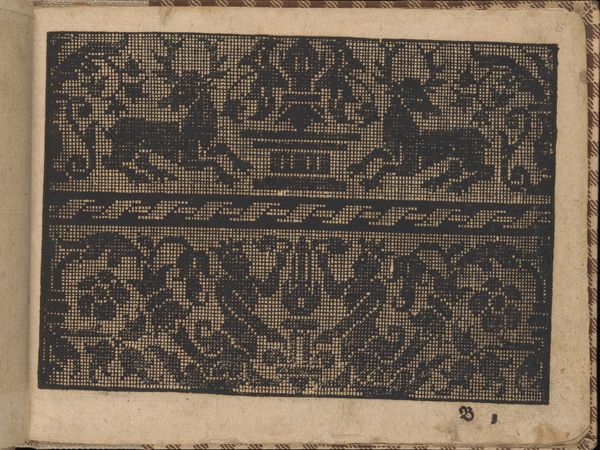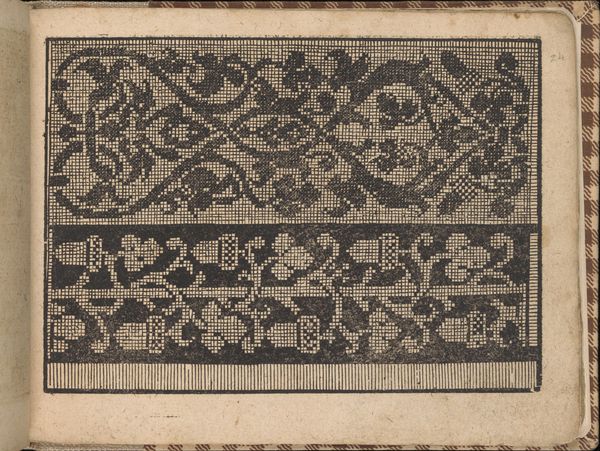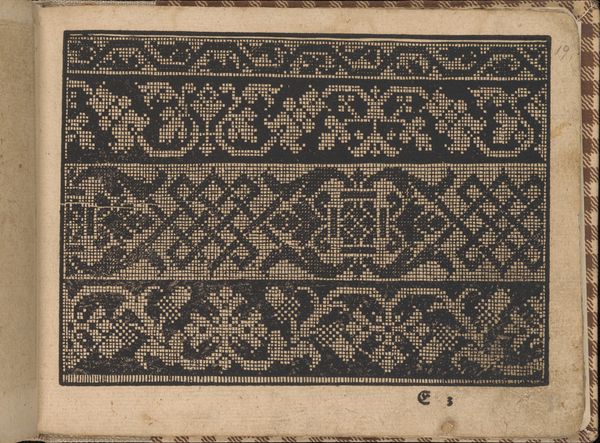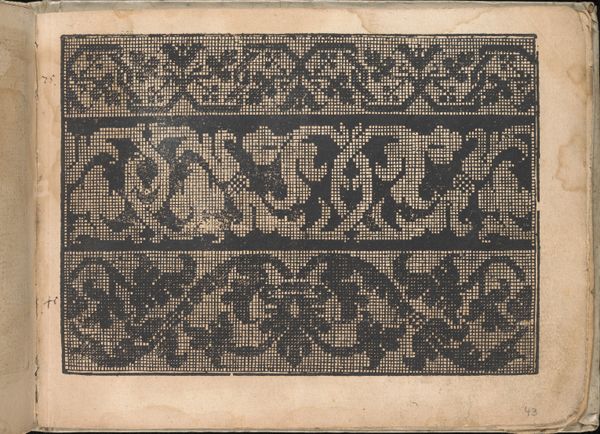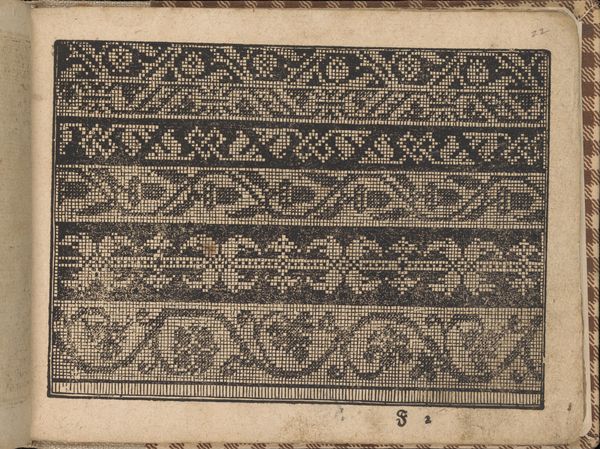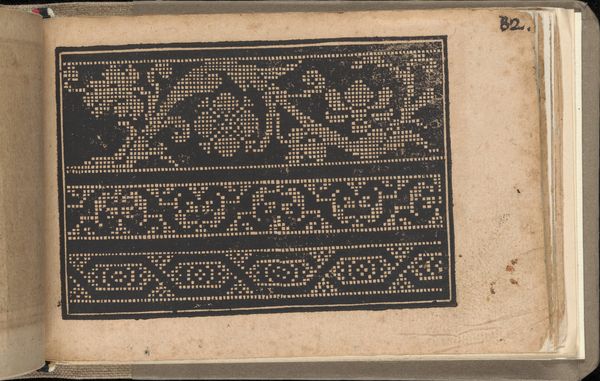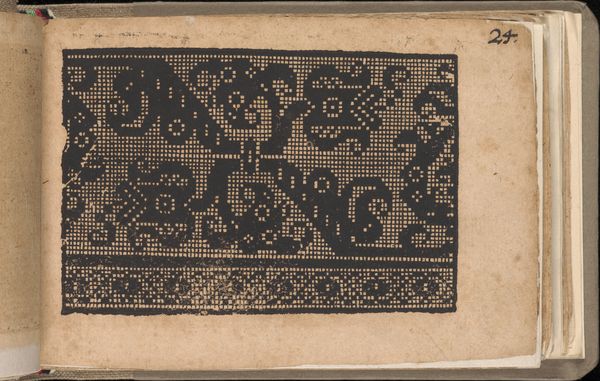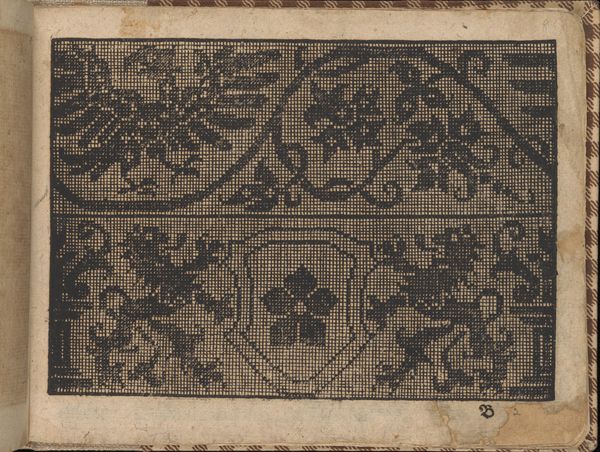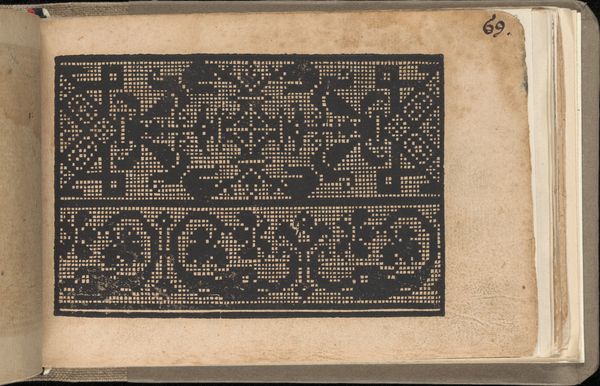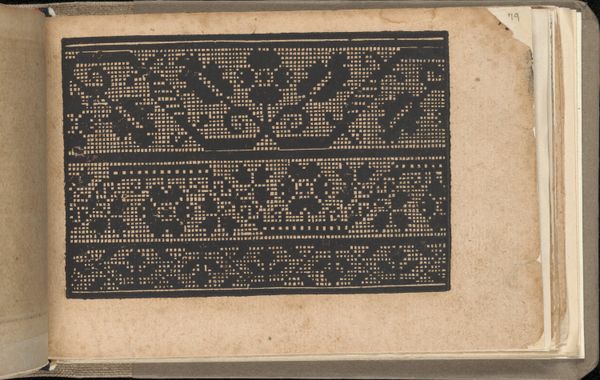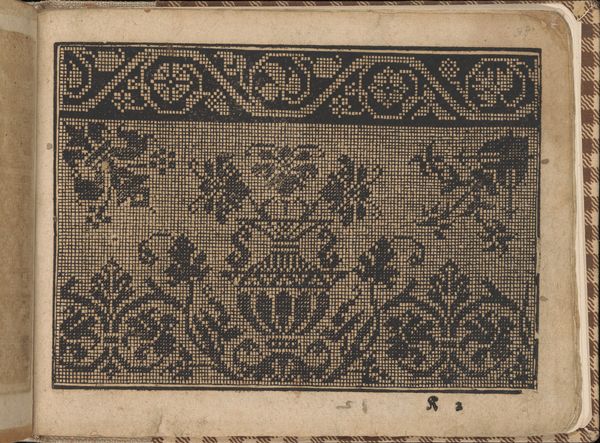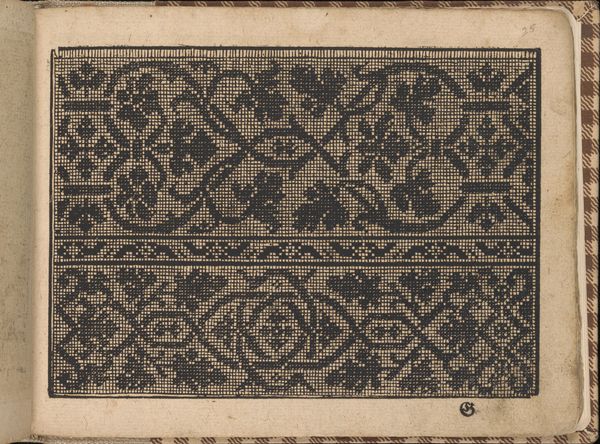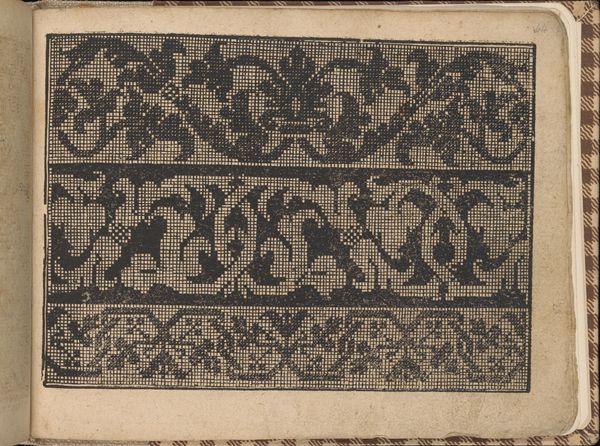
drawing, graphic-art, print, paper, ink, woodcut
#
drawing
#
graphic-art
#
aged paper
#
toned paper
#
ink paper printed
# print
#
book
#
human-figures
#
mannerism
#
paper
#
ink
#
woodcut
#
human
Dimensions: Overall: 6 5/16 x 8 1/4 in. (16 x 21 cm)
Copyright: Public Domain
Curator: We’re looking at a page from Bernhard Jobin’s "New Künstlichs Modelbuch," created around 1600. It’s a woodcut printed in ink on paper, part of the collection at the Metropolitan Museum of Art. Editor: It strikes me as intricate but also austere. The stark black ink against the toned paper creates a high contrast. It’s almost like looking at a textile pattern or pixel art, very structured and yet strangely organic. Curator: The "Modelbuch," or model book, served as a resource for artisans—patternmakers, embroiderers, and others who needed design ideas. The designs reflect the visual language of Mannerism, a style characterized by artifice and complexity. Consider this book a kind of encyclopedia of culturally-encoded patterns. Editor: Exactly, that grid structure speaks volumes. Notice how each tiny square contributes to the larger image—a figure holding what looks like a musical instrument, a decorative urn, and foliage. This very visual modularity echoes the late Renaissance aesthetic in Germany at the time, but also something else: perhaps some deeper mathematical harmony underpinning this seemingly chaotic world of patternmaking. Curator: And the geometric border along the top is a wonderful example of repeating motifs, reflecting ideas and motifs handed down through generations. Editor: There is also something visually pleasing about how well Jobin's composition is balanced, giving the book a pleasing, aesthetically coherent format. Curator: It provides a fascinating glimpse into the visual culture and aesthetic sensibilities of the time. Each design carried cultural associations and symbolic weight. We can decode so much about 17th-century beliefs and tastes from seemingly simple pattern books such as this. Editor: Yes, these historical handbooks transmit knowledge through shapes, revealing an intriguing cultural language with an intellectual aesthetic behind it. Curator: Studying images like this offers us access to the continuous thread of symbols within culture. Editor: It makes you consider, in turn, how we today find, and give, cultural meaning within our visual patterns.
Comments
No comments
Be the first to comment and join the conversation on the ultimate creative platform.

